

Suunto Blog

Head back to work on top of things with a Suunto 7 smartwatch
Summer holidays are coming to a close in the northern hemisphere and we’re returning to work. It takes time to refocus and build momentum. It’s completely understandable to feel challenged by all the pressures of maintaining a job, business, family, plus staying fit and eating well.
Technology can’t magic the pressure away, but it can help you stay on top of things, save you time and even serve as support to build positive habits. The Suunto 7 smartwatch is powered with Wear OS by Google, providing a buffet of apps designed to help you manage everyday life. We consulted our inhouse technology geeks about which apps they find the most helpful and they came up with nine.
Spotify
Spotify's Wear OS app enables you to listen to music on your Suunto 7 without your phone – and even when offline. Connect your Bluetooth headphones with your watch and download the tracks that you want to take with you!
Learn more about listening to music on the go with a Suunto 7 and Spotify here. And once you have it, check out Suunto’s workout playlists on Spotify.
Wrist Camera
Say goodbye to awkward selfies that strain your neck as you try to get you and your two friends all in the frame. This app lets you control and preview your phone camera remotely from your smartwatch. This simple app is easy to use. Find it in Google Play here.
Todoist
Stay on top of all the tasks you need to complete with the Todoist app. You can add, check, and complete tasks with your watch. You can also track your progress on meeting daily and weekly goals. Find it in Google Play here.
Google Keep
This handy note-taking service allows you to capture ideas, notes or tasks whenever they pop into your mind. You can dictate your thoughts and Keep will transcribe them. You can create reminders and tasks, and share them with others. Click here to get it.
Bring!
No more shopping lists on the back of crumpled receipts! Your shopping just got easier with this app which allows you to create and share shopping lists with your family or friends from multiple devices, including by simply speaking into your smartwatch! Get it here.
Wear Casts
This app allows you to listen to your favorite podcasts offline. When you head out for a run, you can tune in without having to take your phone with you. Get it here.
If you prefer audiobooks over podcasts, check out NavBooks. This app places your library on your wrist – also for offline listening.
Find my phone
This handy feature is part of the Wear OS system and means you won’t ever again lose your phone down the back of the couch and think your life is over. Unless you can’t find your watch, too, in which case you are entitled to panic! All you need to do is tap a button on your watch face to make your phone ring. Breathe.
Google Assistant
Wouldn’t be nice if we could all have a personal assistant? Well, Google Assistant more than suffices. Schedule events and reminders in your calendar, create shopping lists, check the weather – all by simply speaking to your watch.
Citymapper
Get live subway, bus and train times, and find the best route to get where you need to go with step-by-step instructions – all via your watch. Get it here.
Healthy Recipes
Never ever get cookie dough on your phone again! This handy app allows you to follow recipes from your watch face, with the phone safely placed away from the chaos.
Suunto 7 support: Here you'll find user guides, how to videos and more
Read more articles
Welcome to the season of the FKT
Start your path to mountain navigation mastery here
The benefits of training to music and making your best playlist
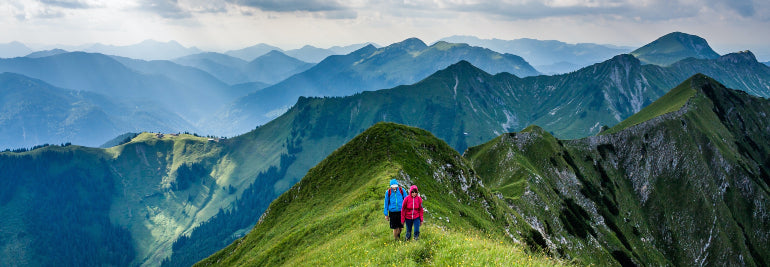
Start your path to mountain navigation mastery here
Becoming confident at navigating with a map in the mountains doesn’t happen overnight. You can’t read a book and develop the skills. They need practice in the field, in a variety of terrain and conditions. Then the theory becomes grounded in experience.
“Good navigation skills are a big booster for self-confidence,” says Suunto’s resident navigation pro, Terho Lahtinen. “When you know you’ll find your way back, it gives you the freedom to explore new surroundings without any fear of getting lost. That is pretty nice whenever you come to a new place.”
Photo by Jan-Niclas Aberle on Unsplash
Expand your horizons
This is the fifth and final article in our series on mountain navigation. In this one, we review the previous four articles, touch on the key takeaways from each of them, and bring them all together in one place so they are easy to review. It’s worth going through each of them a couple of times so it all sinks in.
“Wayfinding and map reading are absolutely useful for anyone regardless of age,” Terho says. “It’s a great way to develop three-dimensional thinking, foster curiosity, and to encourage the spirit of exploration!”
Learn the basics
In the first article, Terho explains how to get started. Developing good location awareness and topographical map reading ability go hand in hand. Each supports the other. You really need to cement these skills before leading trips into big, unfamiliar mountain terrain.
To become a confident wayfinder you need to fall in love with topo maps. Buy maps that illustrate outdoor recreation areas you know well and study them carefully. Investigate how land formations are depicted. Get a feeling for contour lines and how they communicate inclination. Take your map outdoors and compare what it tells you with the landscape you see around you. Doing this over time helps to develop location awareness.
“Map reading skills are the number one thing to learn,” Terho says. “Maps tell us how the world around us looks. If you know how to read one and correlate the information with the terrain, you can get wherever you want.”
Read how to find your way in the mountains.
Photo by Fabrizio Conti on Unsplash
Planning a trip
To plan a safe and challenging trip in the backcountry you need to have developed your map reading skills, location awareness and general outdoor experience. Otherwise your planning won’t be based on anything solid. Good planning is important to ensure your trip is a success.
This is why in the second article Terho recommends people new to map reading first plan a trip somewhere familiar. This will allow you to relax and to compare what you have seen before with what you see on the map. It makes recognition easier.
Once you have selected a destination, study the terrain features on the map. Look at potential start and end points, possible points of interest, handrails, the contour lines, and consider what is realistic for your group. Review this second article above for pacing information and factoring in break times.
Read 7 tips to plan a route in the mountains.
Staying on track
The planning is done, and now you have parked your car at the roadend and are heading out into the mountains. This third article is about how to stay on track when you’re out there.
Two things are particularly important now. Firstly, keep a schedule outlining what landmark or terrain feature you will reach and when, and monitor your travel time. Secondly, use handrails and landmarks to guide you.
Look at your map before you start each leg of your trip and try to memorize the upcoming terrain features.
Read our 9 tips for staying on track in the mountains.
Challenging conditions
The best laid plans can go awry. And that’s partly what makes us love adventure, right? If it was always easy and straightforward it would also be boring. Adversity helps us to find our inner strength. This is why we have always been drawn to adventure.
In this fourth article, we look at how to handle challenging conditions, specifically poor visibility. This is when following handrails, being flexible with your plan, and having supplementary technology, like a GPS device, makes all the difference.
Read 9 rules to follow when your trip in the mountain goes pear shape.
Practice makes perfect
As with any skills, practice makes perfect. “Reaching a master level is often a process of years,” Terho says. “But if you study maps regularly at home and every now and then spend a few hours practicing in the outdoors, you will make good progress in months. It’s something you try out once a year, you’ll start from scratch every time.”
Lead images:
Photo by Tim Tiedemann on Unsplash
Photo by Toomas Tartes on Unsplash
Read more articles
How to find your way in the mountains
7 tips to plan a route in the mountains
A veteran navigator's 9 tips for staying on track in the mountains
9 rules to follow when your trip in the mountains goes pear-shaped
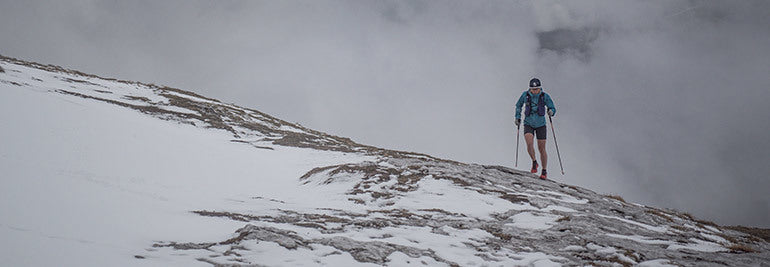
9 rules to follow when your trip in the mountains goes pear-shaped
Spend enough time in the mountains and you learn to expect the unexpected. You might start out in delightfully warm weather and then, surprise, a storm arrives and covers the landscape in snow. Didn’t see that coming!
In the second article in this series on wayfinding, we talked about how to plan a route in the mountains. In the third article, we explained how to stay on track when you’re out on a trip. In this article we look at how to react when conditions get difficult.
Thing is, even the best laid plans can and probably will go awry. It’s important to understand your plan is just a plan. The world around you marches to its own drumbeat.
Photo by Tim Tiedemann on Unsplash
3 general rules
Be responsive
Our resident navigator-in-chief Terho Lahtinen advises to expect the unexpected. You don’t want to get too vigilant and uptight, however, because then nothing is much fun. Just keep it in the back of your mind that things can change, and to be responsive when they do.
Terho says to cultivate this quality it’s good to go through different scenarios in advance of the trip and to have plans for each of them.
“In the mountains, you should always have a plan B for surprises: a shorter route, extra clothing, first aid kit, backup navigation device, and so on,” he says. “Having the right equipment and skills to use them properly is the best preparation.”
Stay calm
Goes without saying, but when things take a turn for the unexpected it’s important not to panic. Panic impairs our decision making ability, which can be a big deal in the backcountry. Instead, do something to help you relax.
“When you encounter an unwanted situation, make a stop, have a snack, find shelter if possible and put on an extra layer to keep warm,” Terho says. “It’s more important to make the right decision rather than a quick one that turns out wrong.”
Consider all options
Once you’ve settled down, consider all your options. Talk with your group and see how everyone is feeling. What options suit the skill level and comfort zone of your group?
“Sometimes the conditions are just not on your side and the only reasonable plan B is to postpone the trip,” Terho says. “This can be a very hard decision if it’s a long-awaited adventure, but it’s better to be safe than sorry.”
This is when a Suunto 9 comes in handy. The watch’s Find Back function guides you directly back to your starting point via a breadcrumb trail on the watch face. You can also store Points of Interest on the go and navigate back to them.
Photo by asoggetti on Unsplash
Specific rules for low visibility
One typical thing that can catch people out in the mountains is poor visibility, whether caused by fog, rain, snow or low light. You have to pay extra attention in any of these conditions, and really consider what options are the best for you and the group.
Easy does it
In low visibility always choose the easiest route to follow. Stay on a marked trail instead of taking an off track shortcut.
“If there are no trails, use obvious terrain features as checkpoints that you are sure to recognize,” Terho says.
Know your location
One of the ways people get into trouble in the mountains is by pushing on hastily without being sure about their location. In low visibility, take the time to regularly check in with your map.
“If you lose your location on the map, it is much more difficult to find it again if you can’t see your surroundings,” Terho says. “In practice, you will need to pay attention to all details in the terrain that you can identify on the map, and also work through the terrain features that you expect to see when moving on.”
Keep track of time
Monitoring your travel time is essential to estimate the distance you have traveled. This is important because in low visibility it will help you estimate where you likely are on the map.
“It’s worth noting that in poor visibility we tend to overestimate the distance traveled and the pace often gets slower when visibility drops,” Terho says. “When trying to spot yourself on the map, remembering this limits the radius of where to look on the map.”
A stream can act as a handrail to lead you to the next terrain feature. Photo by Hamed Alayoub on Unsplash
Follow handrails
We talked about using handrails as navigation aids in the previous article in this series. They can be particularly useful in low visibility, even as reassurance.
“A good handrail is a clear terrain feature that you can easily follow, such as a creek, river, hillside, a fence or the treeline,” Terho explains. “Sometimes you can also use the elevation of the handrail as an additional navigation aid.”
Use all your tools
When you’re way out in the backcountry far from help or above the treeline and exposed to the elements, time is of the essence. Cold is the enemy. Use all your tools to help you stay on track and safe. Your compass, watch, altimeter, GPS device – each one can help you.
“Use your compass to check the trail you’re on goes in the right direction,” Terho says. “Check the time every now and then; knowing your average pace and the time in the last known location helps to estimate how far you could have traveled. An altimeter is also a practical tool. For instance, working out your location on a trail that goes up or down a slope can be done with an altitude reading. As a backup, it’s also good to have a GPS like a Suunto 9 watch with the most important waypoints and the planned route stored.”
Wait it out
Sometimes the best thing you can do is to find shelter asap. Especially in cold conditions, staying warm is the priority. Hypothermia, when your body loses heat faster than it can produce it, can set in within minutes to hours, depending on the temperature.
“There are times when the best option is to pitch camp, sleep over and evaluate the options again next morning,” Terho says.
Lead image: Photo by Philipp Reiter
Read more articles
How to find your way in the mountains
7 tips to plan a route in the mountains
A veteran navigator's 9 tips to stay on track in the mountains
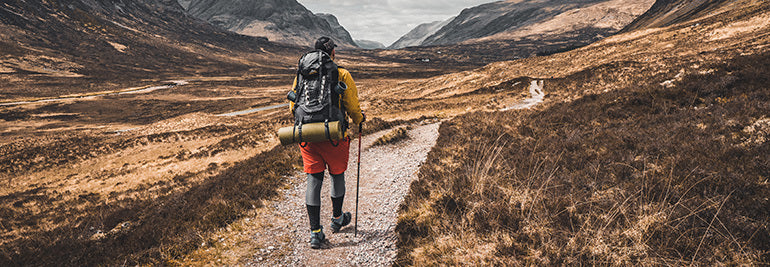
A veteran navigator’s 9 tips for staying on track in the mountains
The first two articles (here and here) in this series on way-finding were about skills and preparation. In this one, our resident navigation guru Terho Lahtinen take the training wheels off. Now he distills the essentials to stay on track when you’re on an adventure out in the backcountry.
Terho has been map reading and navigating since he was six years old, when his father taught him. His love of the outdoors grew in the Boy Scouts, and eventually he competed in orienteering at the national level for Finland for more than 20 years, and was lead navigator for adventure racing team Salomon X-Act which competed around the globe for eight years.
“Mountain sports took on a bigger role in my life while adventure racing,” Terho says. “I was the lead navigator in our team. Nowadays, I’m hiking, biking and ski-touring in the mountains as often as I can get away with.”
Clearly explain the route ahead to your group. This ensures everyone learns. © Arc'teryx / Piotr Drozdz
Do a gear check
You’ve just parked at the roadend, get out of your car, and gaze up at the mountains around you. You and your group will be alone there. It’s time to get locked in.
First things first: check you have all the essential gear packed. The right maps, head torches, first aid kit, your trusty Suunto 9 or other GPS, maybe your avalanche safety gear, and that all electronic devices are fully charged.
Brief the group
Before charging up the trail, get your group together and hold a short briefing. This ensures everyone is on the same page and means less questions or confusion later. Talk about your intention for the trip, for example to stay safe, have fun, and be patient with one another.
Then do an overview of the days ahead; where you are going, distances each day, points of interests, and where you’ll be sleeping. Lastly, preview the day ahead, the first leg of the day and what you will be encountering, and when you’ll be having lunch.
Remember to factor in breaks and toilet stops. Photo by Ted Bryan Yu on Unsplash
Keep a schedule
Knowing what you should encounter on each leg of your trip is the key to staying on track. Terho advises scheduling check points (to reach specific locations at particular times), consider safety margins, and when to turn back or change plans, perhaps due to tiredness, darkness, or inclement weather. Review the second article in this series to consider pace and average travelling time. Pause for a few minutes between legs, look at your map, and identify what’s coming up.
“It’s good to have an overall idea of the day, and a more detailed understanding of the next logical leg of the route (usually a few kilometers or the next hour or so),” Terho explains. “Always identify the next clear navigation point you are aiming at to make sure you are staying on the planned route.”
Use handrails
Handrails are distinctive, guiding terrain features that can guide you to your destination. For example, you might go off trail in a certain direction until you reach a creek you’ve identified on the map. Then, you might use the creek as a handrail to find a bridge.
“Suitable handrails are hills, ridges, contours, ditches, lake sides, rivers, or any other long terrain feature that take you towards the desired location,” Terho says. “Be sure you follow the hand rail in the right direction!”
Aim with landmarks
In addition to hand rails, you can also use distinctive landmarks near your next destination as navigation aids.
“Instead of trying to directly find your destination, identify a clear terrain feature on the map that’s near your destination and find that first,” Terho says. “Then you’re sure to get close to where you want and then use more detailed navigation for the last part of the leg.”
The direct route isn't always the fastest route. Study the terrain. © Arc'teryx / Piotr Drozdz
Test your memory
Building on the previous two tips, Tehro suggests you test your memory to see what you recognise. First, review the plan for the next leg of your journey. Look at your map and identify the handrails and distinctive features or landmarks you should see on the way to your next destination. After getting a handle on that, put away your map and follow your plan to the next destination. How many times do you need to look at the map?
“Mentally visualizing the upcoming route in advance and memorizing the essential features, trail forks, points of interest, is a useful technique,” Terho explains. “It helps you to recognize those locations on the go and gives you freedom to put your map or navigation device away and enjoy the surroundings and the activity itself.”
Be willing to hit pause
If you start to get the feeling you have gone astray, don’t keep going. Pause and gather yourself. One of the things that gets people in trouble in the backcountry is when they go off course there they double down and keep moving forward rather stopping, taking stock, and turning back if need be.
“If you are uncertain, stop and check the location with your map,” Terho says. “If you don’t know where you are, don’t continue until you find it out.”
Technology rocks
While for way-finding purists, navigation should only involve a map and a compass, let us speak honestly here; technology is awesome and makes things easier for many of us.
“If you upload your planned route to the GPS in advance, you can immediately see from the screen if you are off course and where the right course is in relation to your current location,” Terho says. “Most GPS also have an off-course alarm, notifying you if you left the intended path.”
A Suunto 9, or other GPS device, includes an altimeter, which is a useful navigational support. It tells you your current elevation to help you identify where you are on the map. You can then stay at the correct elevation for your course. For example, as you cross a mountain saddle.
Getting back on track
In the event you do go off course, remember that not knowing exactly where you are is not the same as being lost. It’s important to stay calm if you realize you don’t know your location. Take a break, sit down, and think things through.
“Start off by spotting landmarks around you to match them with the map,” Terho advises. “Think about where the last point was on the map where you knew where you were, and how long ago, in terms of time, that was. Work out how far you have traveled since then, what you’ve seen around you, and where you might have ended up. When you identify your location, plan the best option to get back on track.”
You have three options: You can follow your track back to the point where you made a wrong turn. Alternatively, you can follow a new route to get back to your planned course. And lastly, you can follow a new route directly to the next destination.
“The tactic you choose depends on the terrain, the skills and experience of your group, and the time of day,” Terho says. “If you are losing light, or in rugged terrain, always take the safest option.”
Stay tuned for the final article in our series on way-finding: Tips and tricks for handling challenging situations in the mountains.
Lead images:
Photo by Krisjanis Mezulis on Unsplash
Photo by Fabrizio Conti on Unsplash
Read more articles:
How to find your way in the mountains7 tips to plan a route in the mountains8 avalanche safety checks to tick off before the ski season7 tips to find a safe route up the mountain
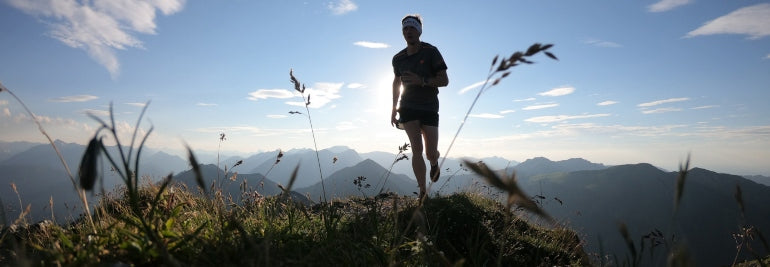
Adapting to life in a time of pandemic
Across the world athletes and adventurers are being confined at home. This does not come naturally to us, but like skilful outdoors people who know how to handle any eventuality in the backcountry, this situation also presents us with an opportunity to adapt, grow, and learn.
That’s exactly what members of our Suunto community are doing. We reached out to a bunch of Suunto trail and ultra runners and asked how they are “making the best use of a bad bargain”. And it turns out there are some unexpected upsides
Johan in France uses his trainer to stay active.
Accept the disruption
Everyone we spoke to reported their goals for 2020 have been disrupted. Johan in Nice, France was looking forward to a cycling race and to hiking the famous GR20 trail across the spine of Corsica – the race has been cancelled and the hiking trip delayed. Joaquin in Spain is confined at home and all his plans have gone out the window.
“At first it took me a while to accept it, but after two weeks I am now quite well adapted,” Joaquin says. “I am aware that we have to overcome this together, and the best thing at the moment is social distancing and being confined at home so the virus doesn’t spread and affect more people worldwide.”
Take it one day at a time
The temptation for many of us at the moment is to worry about the future and to compulsively follow the news about each twist and turn in the battle against coronavirus. Giving in to this temptation saps us of energy and creates anxiety. Instead, it’s more helpful to relax and be in the moment.
Majo is living in Manila and is quarantined at home, and only permitted outside to pick up groceries and medical supplies. “Things may change in 24 hours so I’m just taking it one day at a time,” she says. “I’m trying to make myself productive and sane until we can come back to our ‘normal’ life. We can use this time to reflect on what’s important in life and how we will spend it well after all of these unexpected events.”
To pass the time, Joaquin follows a daily routine, including cooking and exercising. “We’re also playing a lot of old boardgames that I had forgotten about,” he says. “It is really is incredible to rediscover these and play them with my wife so the hours pass faster and our confinement is more enjoyable.”
Joaquin is using his balcony to good end!
Stay active
It’s important to acknowledge training indoors just isn’t the same as running in a forest or hills. Acknowledge, accept and then move on. All of our community is keeping active in one way or another. Fortunately for Tobias, he can still head out for runs in a nearby forest. Majo, on the other hand, is making the most of being confined indoors. “I’m doing strength and conditioning exercises such as high intensity bodyweight training or interval training with dumbbells, yoga and stair workouts for cardio,” she says. “I don't have much workout equipment so I’m making the most of what I have.”
Maja in Sweden is living in the countryside, which sounds idyllic, but actually involves a lot of work. "Our sheep will be having lambs any day,” she says. “We have 33 chickens waiting to crack out of their eggshells (9 days left now!), we need to take home and chop/stalk firewood for next winter, plant all the veggies we’re gonna grow this summer, do some renovations on and in the house. Plus, we have a one year old that doesn’t always want to do the things above!"
Learn new skills
Based in the German Alps, Tobias is using the downtime to create his own topographical maps for future climbing trips. Majo is doing an online course to prepare in case her country requires more health workers to respond to the pandemic. She’s also taking online cooking lessons. Johan has taken up meditation. “I decided to use this time to start things I’ve wanted to do or learn for years, but never had enough time for,” he says. “There are tons of websites which give free online stuff to learn new skills.”
Ryan has taken advantage of online communiation technology to build community. “One new item that I implemented three weeks ago is a virtual group run/walk for my colleagues,” he says. “Every Thursday at 5:00 PM, I host a virtual group run where colleagues run/walk with me as I lead everyone through a workout. It is a fun way to get outside by yourself and meet new people!”
Fortunate to live in the German Alps, Tobias is still allowed outside to exercise.
Get inspired
Joaquin in Spain says for him it’s important to set and achieve a daily goal everyday. Ryan in California takes it a step further and says now is a time to set longer term goals, too. “This is a great time to set fitness goals!” he says. “Let’s use this time to consider what we want to accomplish in 2020 and 2021? Make clear, actionable, and attainable goals this year, and find a way to make yourself accountable. Share your goals with friends, workout buddies, or prospective coaches in order to help you stay accountable. Just because you can’t be in-person with someone right now does not mean you should lose your fitness accountability!”
To stay inspired, Joaquin also looks out for community initiatives to help out. “A good source of inspiration and motivation for the community are the multiple solidarity initiatives that exist, for example in Spain last Saturday there was an initiative to raise funds for COVID-19 research where more than 7,300 athletes ran in their homes and raised almost € 83,000,” he says.
Maja is staying inspired by following other ahletes online. "A lot of athletes are doing live sessions and Q&As in social media channels so take the time to ask them questions, train with them and make plans for future adventures, " she says.
Look on the bright side
Every cloud has a silver lining, they say, and even though this pandemic is causing so much suffering it’s causing a few positive things, too. Humans evolved what scientists call “negativity bias”; the tendency to be more attuned to spotting problems and threats than seeing the positive. This helped our species survive when we were regularly under threat. Now, however, we can turn this around and learn to focus more on the positive.
“Even though my heart is really breaking seeing people and health workers get sick, die and starve because of this pandemic, a positive side of the quarantine for most parts of the world is less pollution and more healing time for the Earth,” Majo says. “Some families are spending more time together which is also priceless. We also get to realize we can live with less than the usual. Nevertheless, I am really hoping and praying desperately that this will end soon so we can get back to normal, whether that will be a new normal or not.”
Lead image: © AlpineFex
Read more articles
4 indoor workout tips for endurance athletes
How to adapt your training when the unexpected strikes
7 indoor training exercises to stay in shape
12 must-read running articles to booste performance
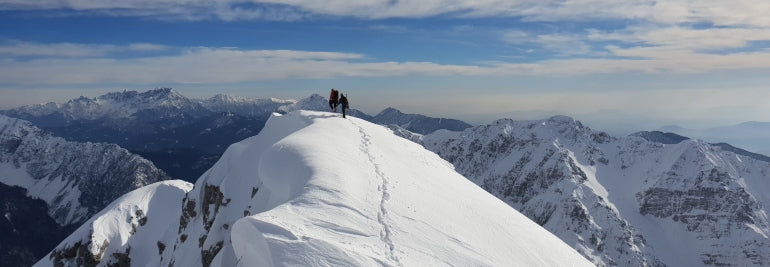
World Vertical Week 2020 Big Data: The nation that climbed the most is …
Well done to everyone who got out there and chased vertical meters over World Vertical Week 2020. We saw some inspiring efforts from people around the world.
Two firefighters, for example, donned their heavy protective clothing and gear, and powered up and down the best training hill in their hometown of Helsinki, Finland. That’s going above and beyond the call of duty! Read their and two other cool stories from the week here.
At Suunto HQ we are always excited to analyze the data and see how much our users have climbed over the week, and which nations and sports have sweated it out and gathered the most vertical meters. This year week has some exciting results.
Over time, World Vertical Week has gradually been becoming a tradition; more and more people are participating and sharing their love of moving uphill.
Return to the top
Last year, one of the surprise results was that Austria lost it’s top place as the nation that gains the most vertical meters by average after holding it for two years. This year, the alpine nation has retaken the throne. The average climb among Suunto users in Austria was 457 m. Sehr gut Österreich!
Notable mention to second place Switzerland (418 m) after dropping to eighth place last year. In the previous two years before that it was near the top. Italy (395 m) came third. These results prove once again that alpine nations know the best way to move is upwards!
The overall kick ass nations
Respect to our users in Italy, Spain, Austria, and France, all nations that came in the top five of five or more categories. Italy landed in the top five of 10 different categories, and Spain landed in the top five of seven.
Skimo the go
No surprises here; once again ski mountaineering accumulated the most vertical meters (838 m) on average out of all our activity types. Mountaineering (545 m) and trail running (466 m) came in second and third, as they did last year.
Race to the top
In the race for most total ascents per country, France beat out Spain to win the country that climbed the most. Last year, Spain came out on top. And, once again, Italy came in third.
Impressive individual efforts
There were 1772 participants who climbed more than a thousand meters during the week, and 1095 individual sessions that included more than 1000 meters of climbing. That’s some solid training, folks. Well done!
Top nations by sport
Ski touring
No nation cracked the 1000 m mark this year in the skimo stakes, but it’s clear many users are gunning for this. Keep pushing and nail it next time!
1. Spain 972m 2. Austria 948m 3. Italy 946m 4. Switzerland 921m 5. Slovakia 903m
Mountaineering
Kudos to Sweden, a small nation of 10 million, for coming out on top in the mountaineering category, and for breaking the 1000 m mark. Surprising given last year it didn’t even make the top five.
1. Sweden 1316m 2. Italy 1060m 3. Austria 666m 4. Spain 581m 5. Slovenia 494m
Trail running
People in Asia are crazy about trail running, and once again Asian nations won the podium this year and four were in the top five. Nice!
1. Japan 932m 2. Hong Kong 896m 3. Thailand 676m 4. Greece 649m 5. Malaysia 636m
Mountain biking
Austria won this one, followed by Spain and Italy; all nations in the top five last year, too.
1. Austria 582m 2. Spain 513m 3. Italy 469m4. Switzerland 375m 5. France 356m
Trekking
Notice anything? This time Italy wins and Spain and Austria follow.
1. Italy 559m 2. Spain 397m 3. Austria 375m 4. France 352m 5. Malaysia 316m
Hiking
Malaysia came out on top here, and, as a side note, also came in fifth place for both trekking and trail running. We can imagine exploring the incredible mountainous rainforests in Malaysia must be pretty motivating!
1. Malaysia 606m2. Italy 475m 3. New Zealand 453m4. Slovenia 352m5. Japan 343m
Nordic skiing
Go Canada! Last year Canada came second, behind France. This year they reversed positions.
1. Canada 438m2. France 268m3. Norway 233m4. Austria 218,0m5. Italy 217,6
Cycling
Portugal won after not even making the top five last year. Spain, Italy, Israel and South Africa once again filled the rest of the positions.
1. Portugal 460m 2. Spain 390m 3. Italy 345m 4. New Zealand 316m 5. South Africa 310m
Running
This category had very narrow margins between nations, and a slight reduction in average meters from last year. Last year New Zealand won it. Congrats Norway!
1. Norway 156m 2. Switzerland 151m 3. Czech Republic 142m 4. Italy 140m 5. France 139m
Lead images:
Photo by Klemen Tušar on Unsplash
Photo by Jamie Davies on Unsplash
Read more articles
On the rise: top stories from World Vertical Week 2020
How to find your way in the mountains
7 tips to accelerating your vertical speed










































































